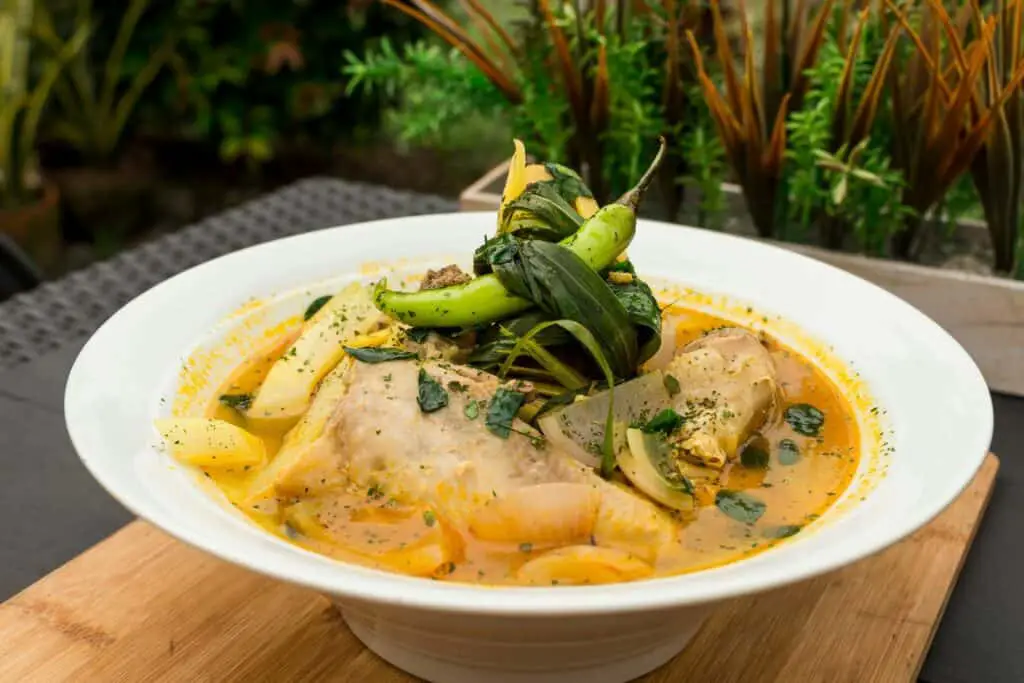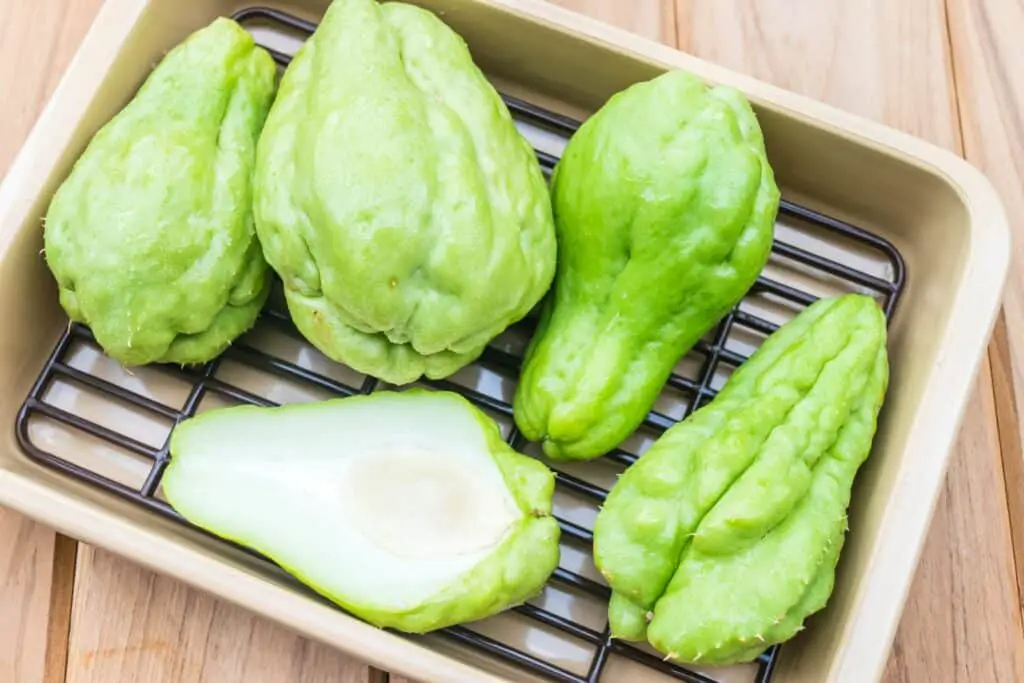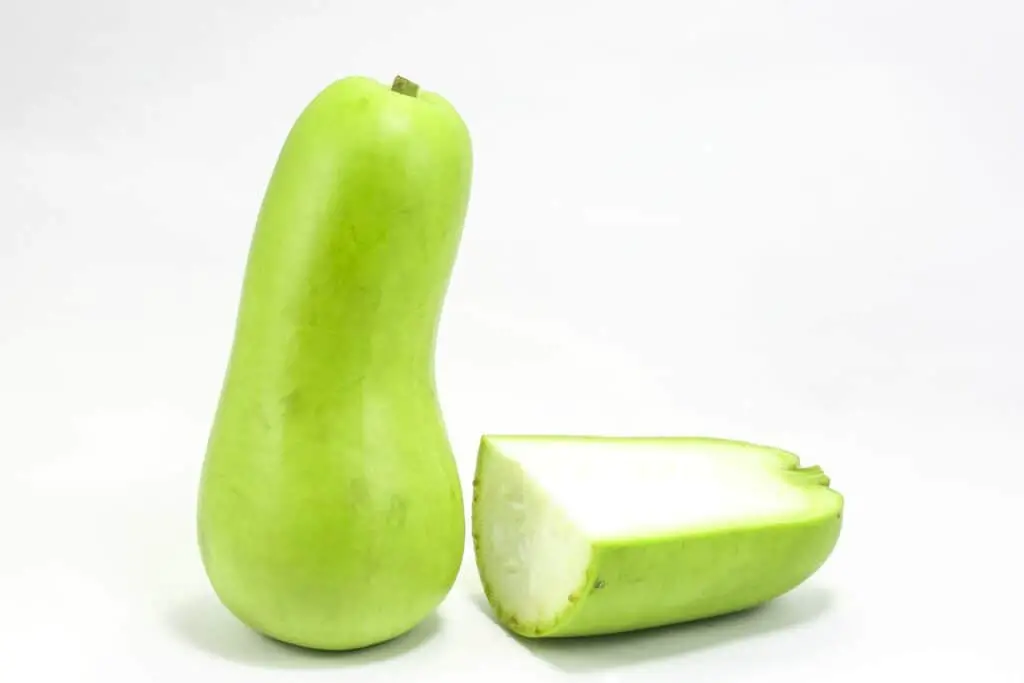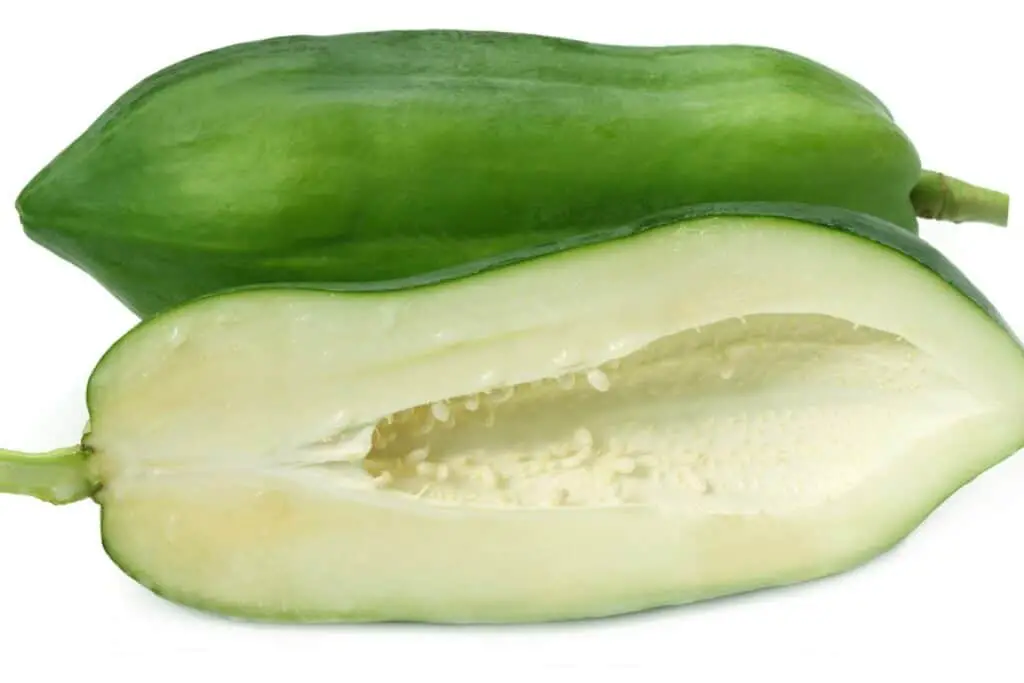
As a Filipino who lives outside of the Philippines, sometimes I crave tinola but can’t find the exact ingredients that the recipe calls for. Because of that, I sometimes have to find close substitues so that I can still have tinola that’s as authentic as possible.
Papaya can be substituted by Sayote, Pawpaw or Bottle Gourd in Tinola. The closest alternative to papaya would be pawpaw fruit, as it looks and tastes very similar to papaya. Sayote is also a popular substitute for papaya and provides a refreshing taste to the tinola.
Want to know more? Keep reading!
What is the substitute for papaya in tinola?
Papaya is a common ingredient in many Asian dishes, including the popular soup known as tinola. The fruit’s sweetness lends a unique flavor to the soup, and its soft texture makes it a perfect choice for dishes that are meant to be light and refreshing. However, papaya can be difficult to find in some parts of the world, and it can also be quite expensive.
For those reasons, paw paw, sayote, and bottle gourd are all common substitutes for papaya in tinola. Each of these fruits has a similar flavor to papaya, and they are also similarly textured. As a result, they can all help to create a dish that is just as delicious as one made with papaya.
Pawpaw in tinola

The pawpaw fruit is native to the Philippines. It is the largest member of the climbers family and can grow up to 30 feet in length. The fruit is round or oval shaped and has a yellow or orange flesh with black seeds. It has a sweet taste and a strong aroma. The skin of the fruit is thin and delicate, so it is often eaten along with the flesh. Pawpaw fruits are a good source of vitamins C and A, as well as potassium and magnesium. They are also low in calories and fat. Pawpaw fruits are typically available from October to February. In the Philippines, they are often used in desserts or made into juices and smoothies.
Sayote in tinola

Sayote fruit is a type of pear-shaped fruit that is popular in the Philippines. The skin of the sayote fruit is green and slimy, and the flesh is white and crunchy. Sayote fruits are often used in soups and stir-fries, as they have a mild flavor and can be easily cooked. In addition to being a tasty ingredient, sayote fruit is also said to have numerous health benefits. For example, sayote fruits are a good source of fiber, which can help to regulate digestion. They are also rich in vitamins and minerals, including vitamin C, potassium, and calcium. So if you’re looking for a delicious and healthy fruit to add to your diet, be sure to give sayote fruit a try. You won’t be disappointed!
Bottle Gourd in tinola

Bottle gourd is a popular vegetable in the Philippines that is used in many different dishes. It is a type of squash that has a long, slender shape and green skin. The flesh of the bottle gourd is white and has a mild, watery flavor. It is often used in soups and stews, as well as stir-fries and curries. Bottle gourd is an excellent source of vitamins and minerals, including vitamin C, beta-carotene, and iron. It is also low in calories and fat, making it a healthy addition to any diet.
Which is better for tinola sayote or papaya?
It really depends on what you like. If you’re looking for something with a sweet flavour, papaya is probably your best bet. But if you’re after something with a more fresh flavour, sayote might be more up your alley. And of course, if you’re concerned about health, papaya is definitely the way to go. So it all comes down to what you’re looking for in a tinola. Personally, I love using sayote in tinola because I find that it keeps the savory taste in tinola, whereas when I add papaya to tinola, it adds a hint of sweetness which I’m not really a huge fan of.
Why is raw papaya added in Tinolang Manok?

There are a few reasons why raw papaya is added to Tinolang Manok. The most popular reason is because the papaya adds a slight sweetness to the dish that helps to balance out the savory flavors of the other ingredients. Second of all, the papaya also adds a bit of texture and bulk to the dish. It’s also seen to be the ‘healthy part’ of the dish, that’s why people who are trying to be healthy cook tinola with a lot of papaya. So if you’re looking for a heartier tinola, adding some raw papaya is a great way to do it. Just be sure not to overcook the papaya, or it will turn mushy and lose its impact.
Which fruit is same as papaya?
Papaya and pawpaw are often thought of as the same fruit, and they are very similar. Both fruits are large and fleshy with yellow-orange skin. They have a soft, sweet flesh that is full of black seeds. Pawpaw is slightly smaller than papaya, and its skin is more yellow than orange. The flesh of pawpaw is also sweeter than papaya. Both fruits are native to tropical America and are grown in many tropical countries. If you can’t find papaya, pawpaw makes a good substitute.
Can mango be substituted for papaya?
Papaya and mango are two fruits that are often used in Filipino dishes. They are both sweet and fragrant, and they both taste delicious as a dessert. It is true that mango can be substituted for papaya in many circumstances, especially if you are thinking about desserts.
However, if you are cooking tinola and want to look for an alternative to papaya, do not reach for a mango. Ripe mangos are too sweet and have a different texture when cooked, and unripe mangoes are way too sour to add to tinola.
Is green papaya the same as sayote?
There’s a lot of confusion out there about green papaya. Some people say it’s the same as sayote, but others insist that it’s something entirely different. So what’s the truth? The truth is: papaya and sayote are completely different fruits! Although one can use either green papaya or sayote for cooking tinola and a myraid of filipino dishes because they have similar textures, they are not the same fruit.

